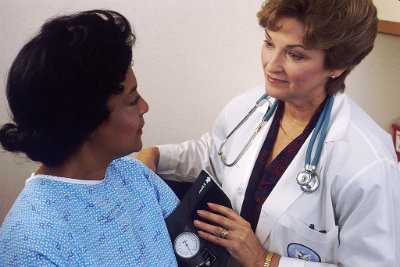 The main goal of healthcare has always been to help people live longer, healthier and more productive lives. In pursuit of that goal, healthcare has come a long way over the years, with major advancements in the diagnosis, treatment and prevention of disease.
The main goal of healthcare has always been to help people live longer, healthier and more productive lives. In pursuit of that goal, healthcare has come a long way over the years, with major advancements in the diagnosis, treatment and prevention of disease.
 The main goal of healthcare has always been to help people live longer, healthier and more productive lives. In pursuit of that goal, healthcare has come a long way over the years, with major advancements in the diagnosis, treatment and prevention of disease. Today, as digitized healthcare brings Big Data analytics platforms into the equation, the goal of healthcare is being more fully realized through improved patient outcomes. Though many of the benefits of big data analytics in healthcare are yet to be realized, here’s a look at 5 ways big data is improving patient outcomes now.
The main goal of healthcare has always been to help people live longer, healthier and more productive lives. In pursuit of that goal, healthcare has come a long way over the years, with major advancements in the diagnosis, treatment and prevention of disease. Today, as digitized healthcare brings Big Data analytics platforms into the equation, the goal of healthcare is being more fully realized through improved patient outcomes. Though many of the benefits of big data analytics in healthcare are yet to be realized, here’s a look at 5 ways big data is improving patient outcomes now.
1. Faster diagnosis and treatment – For many patients a successful outcome depends upon how quickly they are treated. And the sooner an accurate diagnosis can be made the sooner treatment can start. Using big data analytics tools, today’s physicians can combine a patient’s specific symptomatology with other unique factors such as lifestyle choices and demographics in order to arrive at an accurate diagnosis quickly. Armed with real-time information and insights delivered at the point of care, physicians are able to make critical real-time decisions to formulate treatment regimens and get them started right away.
2. Shortened hospital stays and fewer readmissions – Numerous studies have shown a direct correlation between patient outcomes and the length of time a patient stays in the hospital. The risk of hospital-acquired infections and other factors can have an adverse affect on outcomes, making it critical to keep the patient in the hospital only as long as necessary. Unfortunately, patients can remain in the hospital longer—often many days longer—than the procedure calls for, despite their responding well and having no complications. Big data analytics can help caregivers to redirect and optimize care while patients are in the hospital to get those patients out of the hospital sooner, thereby improving their outcomes. In addition, data analysis of electronic health records (EHR’s), demographic, genetic, and even geographic data, combined with predictive analytics tools, can aid physicians in selecting the best course of therapy to optimize patient outcomes and, as a result, reduce readmission rates.
3. Improved Physician Performance – Healthcare data analytics is gaining traction as a means of monitoring and improving physician performance to improve patient outcomes. Hospitals in particular are using physician data to track and measure physician performance against an aggregate of their peers. Physicians who are shown to be sub-par performers may then be given more clinical decision support tools or encouraged to improve through continuation courses or through better adoption of the hospital’s risk-assessment protocols. Although some physicians have balked at the idea of physician report cards, those hospitals that have used physician performance tracking are seeing better patient outcomes with fewer readmissions, mortality, and complications due to the better standard of patient care that their doctors are delivering.
4. More Efficient Lab analysis and personalized therapies – The combination of big data and smart machines is also having an impact on patient outcomes. In particular, biopsies can be analyzed more efficiently by image processing software than lab technicians using traditional methods. On March 18, 2014, researchers at Case Western University reported that by applying big data analytics to magnetic resonance images of breast tumors they could predict whether a patient is suffering from aggressive triple-negative breast cancer, slower moving cancers or non-cancerous lesions with 95 percent accuracy.
Using similar scientific methods, Anant Madabhushi and other researchers at Washington University demonstrated that they can detect treatable Vs. persistent forms of head and neck cancers caused by exposure to human papillomavirus with 87.5 percent accuracy. As to the significance of these studies, Madabhushi stated that, “Personalized medicine is possible using this. Using biopsy specimens, pathologists can’t tell one from the other, but big data analytics can.” The hope is that this big data analytics technique will enable doctors to use an MRI scan to quickly diagnose more aggressive tumors and initiate therapy immediately to improve treatment outcomes and save lives.
5. Improved Medication Therapy Management – Using big data analytics, physicians and clinical pharmacists can evaluate huge volumes of information and patient data to design and implement optimal drug therapies. In addition, advanced software enables these same clinicians to detect drug interactions, contraindications and additive toxicities, all in real-time and at the point of patient care. Simulation software also allows clinical care providers to simulate modified drug regimens to better determine which regimen will produce the best patient outcome.
The challenges involved in implementing big data practices in Hospitals and other healthcare settings are formidable. However, as early adopters are discovering, the ability of the cloud and big data analytics to improve patient outcomes is well worth the effort and expense.
Image Source: Wikimedia






